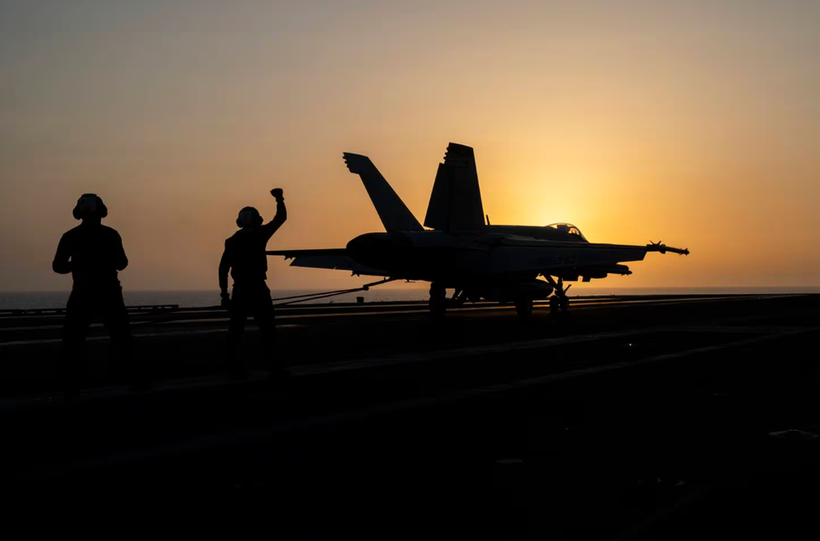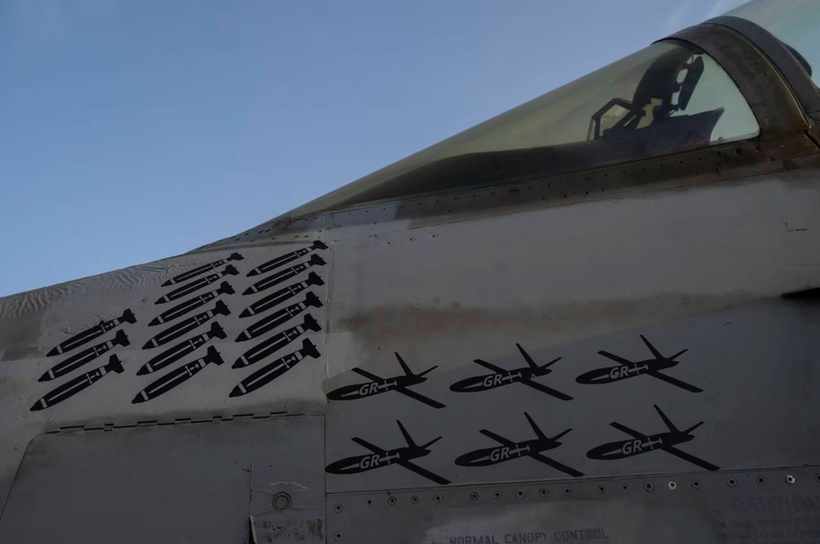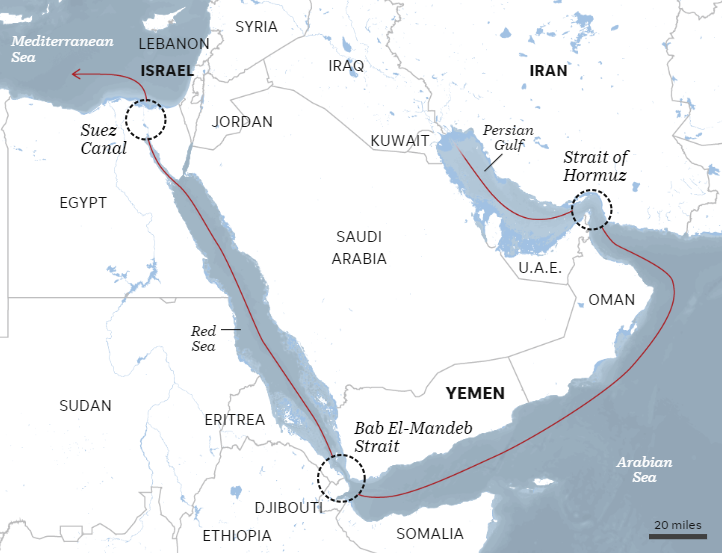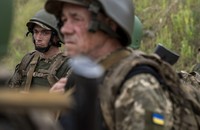Huyen Chihuyenchi@viettimes.vnJune 18, 2024 2:32
VietTimes – The US Navy has been strengthening for decades to be able to fight the Soviet Union, then Russia and China, on the world’s waterways.
But instead of confronting a global power, the US Navy now finds itself locked in a war with an Iran-backed rebel group in Yemen.
The US-led campaign against the Houthi rebels – receiving less attention due to international attention focused on the Israel-Hamas war in the Gaza Strip – has become the most intense maritime battle the Navy has faced. since World War II, naval leaders and experts told The Associated Press.
The war established the US Navy’s mission to keep international waterways open. To do so, they must face a group of rebels that once only possessed rifles and pickup trucks but have now grown into an almost endless supply of unmanned aerial vehicles (UAVs) and missiles.
Almost daily Houthi attacks since last November have seen more than 50 ships targeted, while shipping volumes have dropped on the vital Red Sea corridor leading to the Canal dig the Suez and enter the Mediterranean.
The Houthis say their attacks are aimed at stopping the war in Gaza and supporting the Palestinians, but there are suggestions that the group is simply trying to strengthen its position in Yemen. All indications are that hostilities will heat up, and this puts the US Navy, its allies and their commercial ships at greater risk.
“I don’t think people really understand how serious what we’re doing is and how threatened ships continue to be,” Adm. Eric Blomberg told the AP during a visit to the USS Laboon at sea. Red. “If you make just one mistake, the Houthis will pounce right away.”

There are only a few seconds to act
The intensity of this sea battle can be shown somewhat on the Arleigh Burke-class destroyer, when the paint around the missile launcher’s hatch was burned after multiple launches.
Sailors of the USS Laboon sometimes have only a few seconds to confirm a Houthi attack. In this case, they must immediately contact other ships and open fire on a barrage of incoming missiles that can travel near or exceed the speed of sound.
“It’s a daily job, and some of our ships have been here more than seven months doing that,” said Capt. David Wroe, who oversees guided missile destroyers.
In a clash that occurred on January 9 this year, the USS Laboon, several other ships and an F/A-18 aircraft from the aircraft carrier USS Dwight D. Eisenhower shot down 18 UAVs and 2 cruise missiles. anti-ship program and 1 ballistic missile deployed by the Houthis.
Nearly every day – with the exception of the Muslim fasting month of Ramadan – the Houthis launch missiles, fly UAVs or carry out some other type of attack over the Red Sea, the Gulf of Aden and the narrow Bab el-Mandeb strait that connects them. waterway and separates Africa from the Arabian Peninsula.
The US Navy experienced periods of combat during the “Tanker War” of the 1980s in the Persian Gulf, but most involved ships hitting mines. Meanwhile, the Houthis organized direct attacks against commercial ships and warships.
“This is the longest war the US Navy has seen since World War II,” said Bryan Clark, a former US Navy submariner and senior fellow at the Hudson Institute.
“We are likely about to see the Houthis carry out the type of attacks that the United States cannot prevent every time, and then we will start to see significant damage…If you let this continue, the Houthis will become a much more capable, powerful and experienced force.”

Danger is constant at sea and in the air
Although the Eisenhower primarily operates at long distances, destroyers like the Laboon spend six out of seven days near the Yemeni coast – the “combat zone” as the US Navy calls it.
Fighting in the waters of the Middle East still poses many risks, and the US Navy knows this. In 1987, during the Iran-Iraq war, an Iraqi fighter jet launched a missile that hit the destroyer USS Stark on patrol in the Persian Gulf, killing 37 sailors and nearly sinking the ship.
There is also the USS Cole, which was attacked by al-Qaida suicide boat bombers in 2000 while making a refueling stop in the Yemeni port city of Aden, killing 17 people on board.
AP journalists saw the USS Cole patrolling the Red Sea with Laboon last Wednesday, the same day the Houthis launched a drone attack on a commercial ship there, killing the ship. disabled. The UK Commercial Maritime Operations Center, part of the British military, said the commercial ship was abandoned two days later, adrift in the Red Sea.
Rear Admiral Marc Miguez, Navy commander for Carrier Strike Group No. 2, which includes the Eisenhower and support ships, said the US Navy took down an unmanned vehicle carrying an underwater bomb operated by the Houthis. deployment.
“We are quite confident that Iran is not only providing financial support but also providing intelligence support,” Mr. Miguez said. “We know for a fact that the Houthis have also been trained to target maritime shipping and target US warships.”
When asked whether the US Navy believed that Iran chose targets for the Houthis, Mr. Miguez only said that there was “cooperation” between Tehran and this rebel group. He also noted that Iran continues to arm the Houthis, despite UN sanctions.
Iran’s mission to the United Nations told the AP that Tehran is “very adept at thwarting the US strategy in a way that not only strengthens (the Houthis) but also ensures compliance with appropriate resolutions.”
The risks aren’t just on the water. The US-led campaign has carried out multiple airstrikes targeting Houthi positions inside Yemen, including what the US military described as radar stations, launch sites, weapons depots and military sites. other. An airstrike by the US and UK on May 30 killed at least 16 rebels, this is the deadliest attack that the Houthi faction has admitted.
Captain Marvin Scott, who oversaw all of the air group’s aircraft, said Eisenhower pilots dropped more than 350 bombs and fired 50 missiles at targets during that operation. Meanwhile, the Houthis apparently shot down many MQ-9 Reaper UAVs with surface-to-air missile systems.
“The Houthi air defense capability has been significantly reduced by us, but that capability is still there,” Mr. Scott said. “We are always prepared in case of Houthi attack.”

The war is deadlocked
US officers said their soldiers had some complaints, wondering why the Navy did not step up its attack on the Houthi forces. The White House has not discussed the Houthi campaign at the same level as discussions about the Israel-Hamas war.
There are a number of reasons for this. The United States is trying to reduce tensions with Iran, especially after Tehran launched a large-scale UAV and missile attack on Israel and is now enriching uranium closer to weapons-grade levels than ever before.
Another reason is located in Houthi. The rebel group fought a military coalition led by Saudi Arabia in a widespread war that killed more than 150,000 people, including civilians, and created one of the world’s worst humanitarian disasters. This war has reached a stalemate.
The US fighting the Houthis directly is something the group’s leaders may wish for. The group’s motto has long been “God is greatest; death to America; death for Israel; curse the Jews; victory of Islam”. Opposing America and openly siding with the Palestinians has led some in the Middle East to praise the rebels.
While American and European partners patrol the waterways, Saudi Arabia has largely remained silent and sought a peace deal with the Houthis. Reports suggest that several Middle Eastern countries have asked the US not to launch attacks on the Houthis from their territory, drawing further criticism of the Eisenhower’s presence. This aircraft carrier has had its deployment extended, while its crew has only been in port once since its deployment – one week after the Hamas attack on Israel on October 7, 2023. .
Meanwhile, Houthi attacks continue to degrade shipping in the region. Egypt’s revenue from the Suez Canal – the main source of foreign currency for its struggling economy – has halved since the attacks began.
“It’s almost a ghost town,” Mr. Blomberg admitted.

The US warns Ukraine that it must defeat Russia to join NATO

US increases sanctions, Russia warns “not to let it go”

Posted on June 18, 2024
0